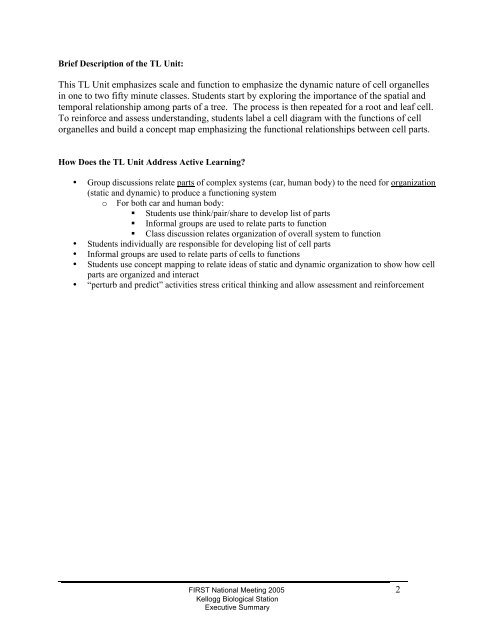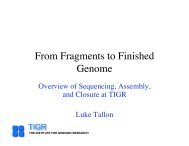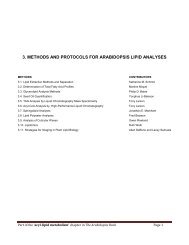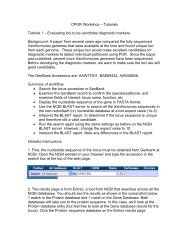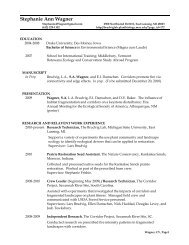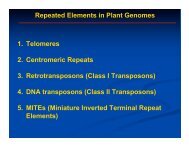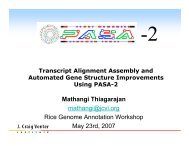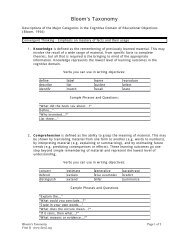1 Cell Biology TL Unit Contributors:
1 Cell Biology TL Unit Contributors:
1 Cell Biology TL Unit Contributors:
Create successful ePaper yourself
Turn your PDF publications into a flip-book with our unique Google optimized e-Paper software.
Brief Description of the <strong>TL</strong> <strong>Unit</strong>:<br />
This <strong>TL</strong> <strong>Unit</strong> emphasizes scale and function to emphasize the dynamic nature of cell organelles<br />
in one to two fifty minute classes. Students start by exploring the importance of the spatial and<br />
temporal relationship among parts of a tree. The process is then repeated for a root and leaf cell.<br />
To reinforce and assess understanding, students label a cell diagram with the functions of cell<br />
organelles and build a concept map emphasizing the functional relationships between cell parts.<br />
How Does the <strong>TL</strong> <strong>Unit</strong> Address Active Learning?<br />
• Group discussions relate parts of complex systems (car, human body) to the need for organization<br />
(static and dynamic) to produce a functioning system<br />
o For both car and human body:<br />
Students use think/pair/share to develop list of parts<br />
Informal groups are used to relate parts to function<br />
Class discussion relates organization of overall system to function<br />
• Students individually are responsible for developing list of cell parts<br />
• Informal groups are used to relate parts of cells to functions<br />
• Students use concept mapping to relate ideas of static and dynamic organization to show how cell<br />
parts are organized and interact<br />
• “perturb and predict” activities stress critical thinking and allow assessment and reinforcement<br />
FIRST National Meeting 2005 2<br />
Kellogg Biological Station<br />
Executive Summary


